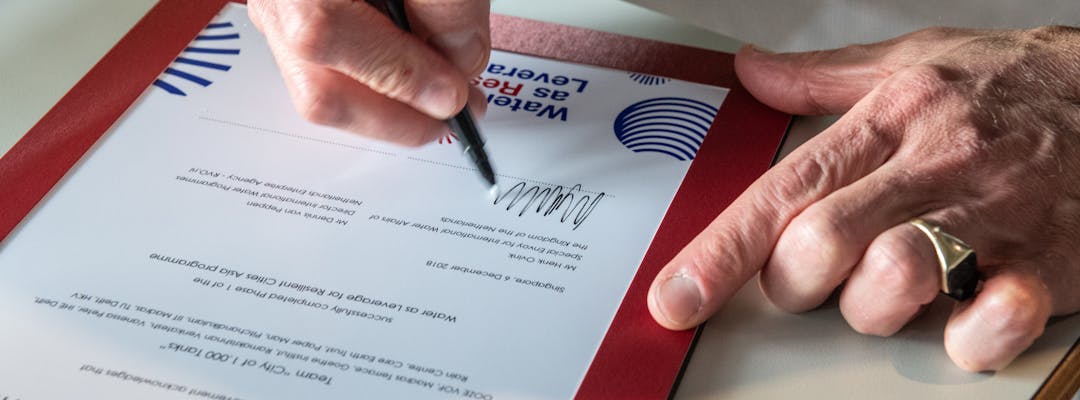
Singapore success propels Water as Leverage to the next level of climate resilience
April 26, 2019
Singapore success propels Water as Leverage to the next level of climate resilience
Water as Leverage aims to help leapfrog Asian cities, and the rest of the world, towards climate resilience by delivering on the promises put on the table through the Sustainable Development Goals (SDGs) and the Paris Climate Agreement. The main challenge was to find the right approach to bridge the gap between the funding capacity worldwide and the best ideas, to achieve meaningful progress.
Bankable proposals On World Earth Day (22 April 2018), Water as Leverage launched its first call for professional teams to engage in the cities of Chennai (India), Khulna (Bangladesh) and Semarang (Indonesia). The Call for Action was the start of a year-long inclusive and comprehensive competitive process to identify the most bankable and ground-breaking proposals and to develop these into resilient, climate adaptation urban water projects.
Building partnerships As partners, Water as Leverage supported the successful teams and the individual cities in gaining a better understanding of risks and opportunities, interdependencies and coalitions. Building partnerships in these cities, around those opportunities, helped progress them into projects. This demanded a collaborative approach from all parties and a broad expertise base.
Wealth of opportunity In Singapore, a year after the launch, from 23-25 April, all parties came together to wrap up the first phase and to define the next steps. “What we found in this phase of Water as Leverage, is that the depth of understanding and the wealth of opportunity and transformative capacity in one process is impressive,” explains the Netherlands’ Special Envoy for International Water Affairs, Henk Ovink. “This, combined with having all stakeholders present, including the international financial sector, really stands out. Every financial partner present said the same thing: ‘we’ve never seen this before!’.”
Bridging the gap “Coming out of Water as Leverage there is only one step that the teams, the cities and financial partners need to take now,” Ovink explains. “That is to turn the first projects - the ones that are truly catalytic, the springboards for replication and scale-up - into a ‘brief’ that matches the financial partners’ capacities, and then, together, move the projects towards feasibility and implementation. With that brief comes the last stage of preparation, with ultimate buy-in at national, provincial and, of course, city level for the project proposals. Then we have almost bridged the gap. There is now a roadmap defined for each of the three cities, including aspects such as ‘governance’, to help ensure that this comprehensive approach stays in place. We have identified what needs to be done, who does what, how can we organise it and when the results can be delivered, for further replication and scaling-up. It is important to realise that Water as Leverage is the start of an outward-rippling movement across the world of climate adaptation action.”
Partners of Water as Leverage The Water as Leverage programme is an initiative of the Dutch government and aims to combat global climate and water problems in collaboration with a number of partners. The programme partners are the three cities of Semarang (Indonesia), Chennai (India) and Khulna (Bangladesh), Asian Infrastructure Investment Bank, FMO, 100 Resilient Cities, Partners for Resilience UN Habitat, WWF, Pegasys and water Youth Network and co-initiators International Architecture Biennale Rotterdam (IABR) and Architecture Workroom Brussels (AWB). All partners were present at the Singapore workshops.